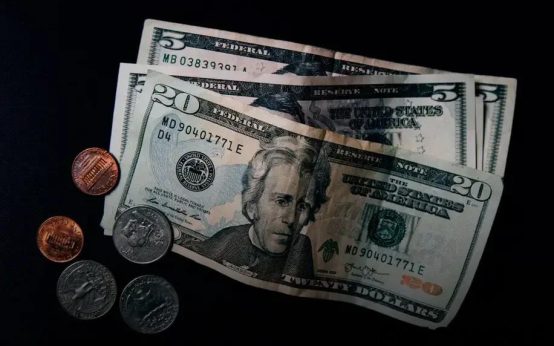Minimalist living has increasingly gained attention for its potential to lead to substantial financial savings. By focusing on simplifying life, many examine whether this approach truly curbs unnecessary spending. We’ll dive into key aspects like clutter reduction and lifestyle adjustments under the minimalist lens. Discover how adopting this philosophy might resonate with your finances effectively.
Understanding Minimalist Living
Minimalist living centers on the principle of reducing physical and mental clutter to focus on what truly matters in life. Emphasizing quality over quantity, minimalism encourages individuals to own fewer possessions. This lifestyle challenges the consumer-driven mindset by stripping down to essentials.
At its core, minimalist living is about intentional living. By understanding what you truly value, you can eliminate unnecessary items and distractions. This leads to a more fulfilling life with fewer burdens.
Adopting a minimalist lifestyle can mean different things to different people. For some, it may involve reducing household items. For others, it might mean changing spending habits or reevaluating personal goals. Minimalism isn’t about deprivation, but about making strategic choices that align with personal values.
The simplicity of minimalist living often brings about greater mental clarity. When your environment is stripped down to the essentials, you can focus better on activities and people that bring joy and fulfillment. This reduction in distractions can lead to increased productivity and a greater sense of well-being.
Though not inherently tied to financial savings, many who embrace minimalism find themselves saving money as they become more mindful of purchases. By understanding the basics of minimalist living, individuals can create a life that is both rich in meaning and lean in unnecessary complexities.
Evaluating Financial Benefits

Calculating the financial advantages of minimalist living involves a comprehensive look at your expenses and savings. Living minimally can lead to significant reductions in different types of costs. One major area of savings is reduced consumer spending. When you embrace minimalism, the impulse to buy unnecessary items diminishes. This can lead to a considerable decrease in expenditures on clothing, gadgets, and household goods.
Moreover, maintaining fewer belongings can result in lower maintenance costs. Repairing, cleaning, and storing items becomes both less frequent and less costly. Additionally, adopting a minimalist lifestyle often leads to smaller living spaces, which can drastically cut down on housing expenses such as rent, property taxes, and utility bills.
A minimalist approach may also contribute to a more sustainable lifestyle, both financially and environmentally. By focusing on purchasing only what is truly necessary, individuals can contribute to a reduction in their carbon footprint, potentially leading to lower energy bills and other long-term savings.
Moreover, adopting minimalism can alter your financial mindset, encouraging long-term financial planning and conscious spending. This shift often results in an increase in personal savings and investments, as money is no longer tied up in depreciating assets and becomes more available for wealth-building opportunities. In summary, evaluating financial benefits requires a long-term perspective, understanding how immediate cuts in spending can lead to increased financial security and independence over time.
Cutting Down on Clutter Expenses
One effective way to embark on a minimalist lifestyle is by cutting down on clutter expenses. Unchecked accumulation of unnecessary items can contribute significantly to financial waste. Begin by evaluating your current possessions and identify what you genuinely use and need. This process is crucial, as it helps in recognizing spending habits and the areas where money can be saved.
Focus on reducing impulsive purchases and practice mindful buying by asking yourself questions like, “Do I really need this?” or “Will this add value to my life?” These considerations encourage thoughtful spending. Additionally, decluttering spaces not only cuts costs but also makes your environment more organized and less stressful.
Take advantage of selling items you no longer need. Platforms like eBay or local community sales can help turn unwanted items into cash. Furthermore, by decluttering, you’re likely to purchase fewer storage solutions, which translates to more savings. Simplifying your living space also decreases the temptation and necessity to fill it with more things.
The Psychology Behind Minimalism

Minimalism is more than just a design trend; it’s a mindset that influences how we interact with our environment and possessions. This psychological shift often stems from a desire to find happiness and fulfillment beyond material goods. By reducing excess and focusing on what truly matters, minimalism links closely to increased mental clarity and reduced stress. With fewer distractions, individuals often find themselves more focused and able to appreciate the simple pleasures in life.
Understanding the motivations behind adopting a minimalist lifestyle can shed light on its financial implications. Many who embrace minimalism do so in search of meaning and contentment, which often results in a natural reduction in unnecessary spending. This is because minimalists tend to prioritize quality over quantity, investing only in things that add value to their lives.
Moreover, decisions influenced by minimalistic psychology often include carefully evaluating what purchases genuinely serve a purpose. This psychological tendency helps individuals align their spending habits with personal values, leading to more mindful consumption patterns.
Impacting financial decisions
These psychological changes influence not just lifestyle but also finance. By cultivating a minimalist mindset, many people find they spend less impulsively, saving money in unexpected areas. The mental discipline that comes with minimalism provides the tools needed to make more calculated and emotionally stable financial decisions.
Embracing minimalism involves confronting the emotional reasons behind consumption and understanding how these behaviors connect to one’s overall happiness and satisfaction. This shift in perception often results in a significant reduction in personal expenses and can alter one’s financial trajectory for the better.
Minimalism and Lifestyle Changes
When embracing minimalism, one key aspect involves evaluating lifestyle changes needed for effective financial benefits. Transitioning to a minimalist lifestyle means consciously choosing to own fewer possessions and prioritizing quality over quantity. This shift in mindset can significantly impact spending habits, leading to long-term savings.
Setting Priorities
A minimalist approach encourages individuals to prioritize needs over wants. By focusing on essential items, unnecessary spending is reduced, freeing up financial resources for what truly matters. Many find this lifestyle leads to a greater appreciation for simplicity and functionality in their day-to-day lives.
Mindful Consumption
Adopting a minimalist lifestyle involves making deliberate choices about purchases, encouraging the practice of mindful consumption. This not only involves buying less but also choosing more sustainable and eco-friendly options, which can further contribute to cost savings in the long run.
Additionally, minimalism can extend beyond physical possessions, affecting activities, digital usage, and even social interactions. Simplifying routines and decluttering schedules can lead to less stress and more time, indirectly impacting financial well-being by providing opportunities for reflection on spending habits.
Minimalism promotes living intentionally. By making conscious choices and changing lifestyle habits, individuals often find themselves spending less and saving more, aligning their financial goals with their life values.
Success Stories: Saving Money

Minimalism has transformed the lives of many people, allowing them to prioritize their expenditures and, ultimately, save money. Many individuals have been able to reduce unnecessary spending by focusing on what truly adds value to their lives. By embracing a minimalist lifestyle, they’ve learned to ask critical questions before making purchases, such as ‘Do I really need this?’ and ‘Will this item add meaningful value to my life?’
An inspiring story comes from Sarah, a single mother, who was able to cut her monthly expenses by nearly 40%. She achieved this by selling unused items, avoiding impulse buys, and focusing on efficient budgeting. This practice not only helped her save money but also allowed her to invest in an emergency fund, providing a sense of security she had never experienced before.
Another noteworthy example is Tom, who turned his financial life around by adapting minimalist principles. By downsizing his living space and keeping only essential belongings, he drastically reduced his living costs. With the savings, Tom managed to pay off debts and eventually financed his passion project, a small business that aligns with his minimalist values.
Ultimately, these stories demonstrate that minimalist living not only promotes financial savings but also encourages a more intentional and fulfilled life. By shedding excess and concentrating on necessities, individuals like Sarah and Tom can attest to the freedom and peace that come with living a minimalist lifestyle.





